
Serve the People: [Analysis] Electoral farce of 23J: almost 30% of the electorate refuses to vote, the parliament is fragmented and the government remains in the air
Featured image: Feijóo (Popular Party candidate) voting; source: La Verdad
We publish this unofficial transtation of the Article of Servir al Pueblo published here.
The bourgeois State carried out, once more, its legitimization process through the electoral farce past July, 23rd. On this occasion, more than 35.146.062 people were called to vote to elect a new parliament (Senate and Chamber of Deputies, higher and lower chamber respectively). With the counting already scrutinized at 100%, we know that 70.6% of the more than 35 millions, who were called to vote, voted. That means that 29.4%, more than 10.400.000 people decided not to participate in the electoral farce. Curiously, the most voted party is no party, but abstention.
The risk of “governance of Spain”
The results for the Chamber of Deputies are as follows:
Abstention: 10.402.425
PP: 8.091.840 (136 deputies)
PSOE: 7.760.970 (122 deputies)
Vox: 3.033.744 (33 deputies)
Sumar: 3.014.006 (31 deputies)
ERC: 462.883 (7 deputies)
Junts: 392.634 (6 deputies)
EH Bildu: 333.362 (6 deputies)
EAJ-PNV: 275. 782 (5 deputies)
BNG: 152.327 (1 deputy)
CCa: 114.718 (1 deputy)
UPN: 51.764 (1 deputy)
Total deputies: 350 deputies
At parliamentary level, results of this elections are uncertain. PSOE and Pedro Sánchez celebrated it as a victory, but the situation really does not favor any of the bourgeois parties (except for EH Bildu for its good results). Neither the so-called “progressive” bloc formed by PSOE and Sumar would reach 176 deputies for an absolute majority, nor the right-wing bloc formed by PP and Vox. The following graphic shows how the numbers do not reach:
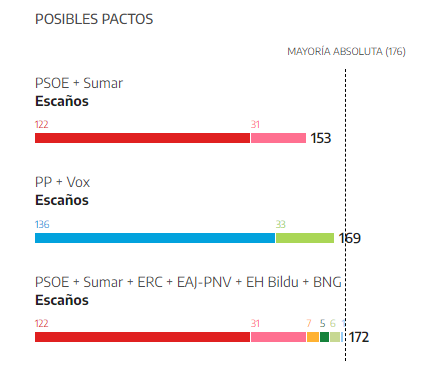
We see how PSOE and Sumar – former “Unidas Podemos” – cannot govern with their usual partners. It remains with 172 deputies, four less than absolute majority. Pedro Sánchez needs Junts to be able to renovate his government. It is not necessary that Junts is part of the coalition, an abstention is useful as long as it has obtained those 172 deputies. Junts has already affirmed that it will not facilitate governance for PSOE in exchange for anything. And that “anything” is, at least for now, for the independence Catalonia referendum. On the other hand, even if they have “won the elections”, the Popular Party – as the bourgeois press sells it as it is the most voted candidacy – will not be able to govern. The numbers do not fit. Vox and EAJ-PNV has blocked each other mutually.
The first option, a government of PSOE with their old and new partners, is the most likely. But for that, whether it is PSOE or Junts, they will have to swallow their own words and break all the electoral promises and supposed “blockades based on principles”. The second option, a government of PP with Vox, UPN, CCa and EAJ-PNV (an option that Feijóo is already trying) is less likely, because both Vox and EAJ-PNV would lose a large base of voters if they accept to collaborate mutually. The third option is a repetition of elections between November and December if the government cannot be conformed.
If the parties of the bourgeoisie were ruled by principles and honesty, elections would be repeated in front of the impossibility of forming a government. But we know that they move for personal interests and for seats, that elections are a farce and that parliamentary politics is a circus that only serves to hit the proletariat with a hammer. We, the revolutionaries, apply the scientific ideology of the proletariat (Marxism-Leninism-Maoism, mainly Maoism) to know reality and transform it, but we are not gurus who could predict the future. Will there be a government or will the elections be repeated? We cannot know. When a circus is full of clowns, any show is possible. What we do know are two things:
1) If there is a new government, whatever it is, it will be unstable and will be forced to make concessions to its partners.
2) if there is government of PSOE in coalition with Sumar and all its partners, it will be difficult to govern taking into account that PP controls the Senate with an absolute majority and the majority of Autonomous Communities and cities.
Although the “normality” of parliamentary life has been broken for a long time since the end of bipartisanship, there is still a parliamentary circus for a while. There will be a crisis in the so-called “governance of Spain”
Has participation increased? Do the masses believe in bourgeois democracy?
If we compare the electoral participation of last July 23rd (General Elections) with those of May 28 (Municipal and Autonomous Elections), we see how participation has risen from approximately 64% to 70%. And if we compare these General Elections with the past ones, in November 2019, it also rises from 66% to 70%.
It would be a mistake to understand this increase of six points as a greater confidence in bourgeois democracy. We must understand that 1) General Elections have always had a higher percentage of participation than municipal ones, because it is seen as a matter of greater importance; 2) there has been a whole media campaign, active and passive, by the Spanish State to encourage voting, both from the right and from the left. They have even increased the hours of the Post Office to facilitate voting by mail.
Also, let’s look at turnout in the General Election:
1979: 67.43%
1982: 79.97%
1986: 70.49%
1989: 69.74%
1993: 76.44%
1996: 77.38%
2000: 68.71%
2004: 75.66%
2008: 73.85%
2011: 71.71%
2015: 73.20%
2016: 66.48%
2019: (April): 71.75%
2019: (November): 66.23%
2023: 70.6%
Abstention moves between 30% and 20% depending on the different moments of class struggle, and how it affects the propaganda and mobilization for the turn-out. The moments of greatest participation were in 1982 (a great mobilization for PSOE’s vote after the first legislature since the transition and the wear and tear of the UCD government), in 1993 and 1996 (wear and tear of the last government of Felipe Gonzalez and mobilization of the vote for the right-wing and José María Aznar) and in 2004 (same mobilization but in reverse, for Rodríguez Zapatero of PSOE and the anti Iraq-war movement). Everything has an explanation if we analyze the class struggle. We know that after governments with a lot of wear and tear, whether they are more or less long, there is a great campaign to mobilize the voters and participation always increases. Just as we know that in electoral repetitions, participation drops, as happened in 2016 and 2019. From this we draw the following conclusion: the moments of peak participation are due to the propaganda to mobilize for the turn-out after a government with wear and tear, and not to greater confidence in bourgeois democracy. This is what happened last Sunday, July 23rd.
In addition, we cannot negate that although participation has increased by 4 points compared to November 2019, the participation of last Sunday the 23rd is lower than the elections of 2004, 2008, 2011, 2015 and April 2019. It is the third lowest in the last 20 years!
Abstention is higher in proletarian neighborhoods and where there is greater rejection of the State
This is the conclusion that we drew in the analysis of the last regional and municipal elections, and also the general ones of last Sunday, July 23rd. Let’s take a look at the large metropolitan areas:
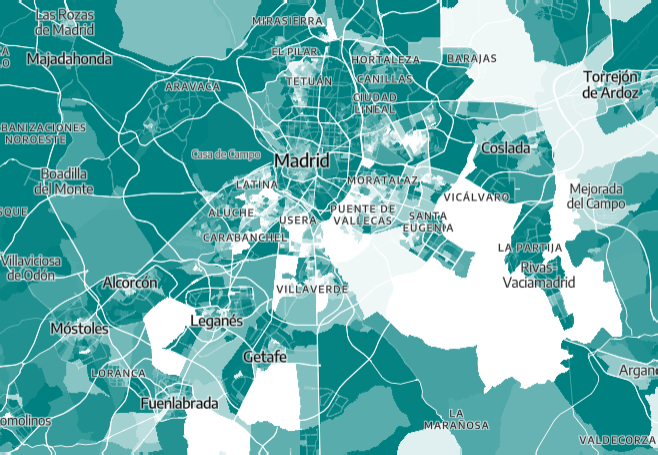
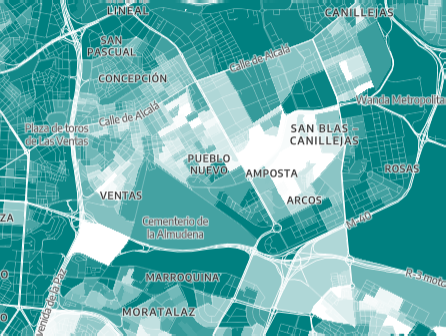
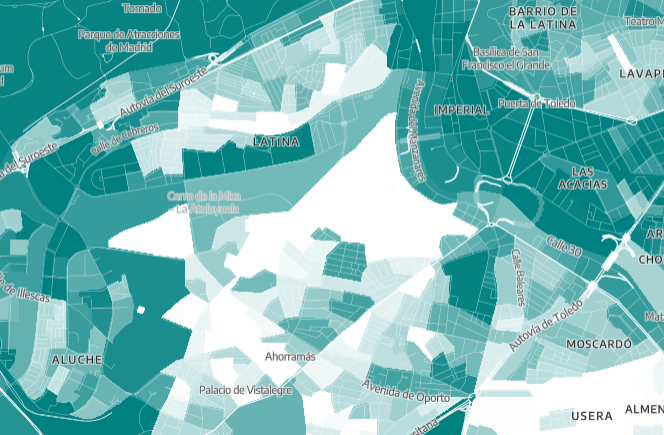
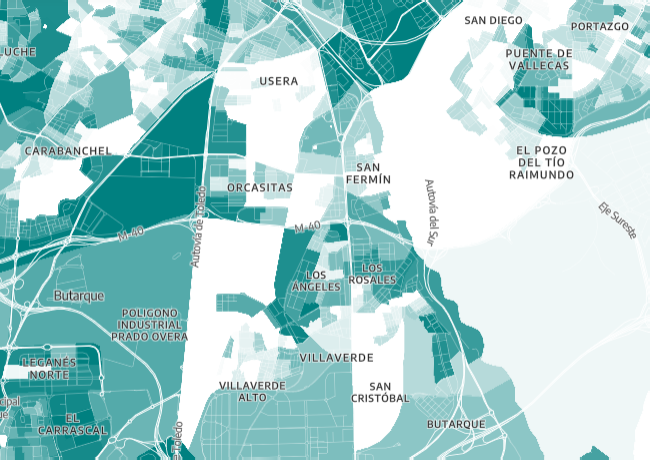
In Madrid, abstention increases from 29.4% on average to 35% and 40% in various districts like Usera, Orcasitas, Puente de Vallecas, Carabanchel and Villaverde, that is, in the proletarian neighborhoods in the south of Madrid. Abstention is also increasing in other proletarian areas such as La Latina or Canillejas. This same situation is repeated in Barcelona, Bilbao, Málaga or Zaragoza, greater abstention can be seen in the working class neighborhoods.
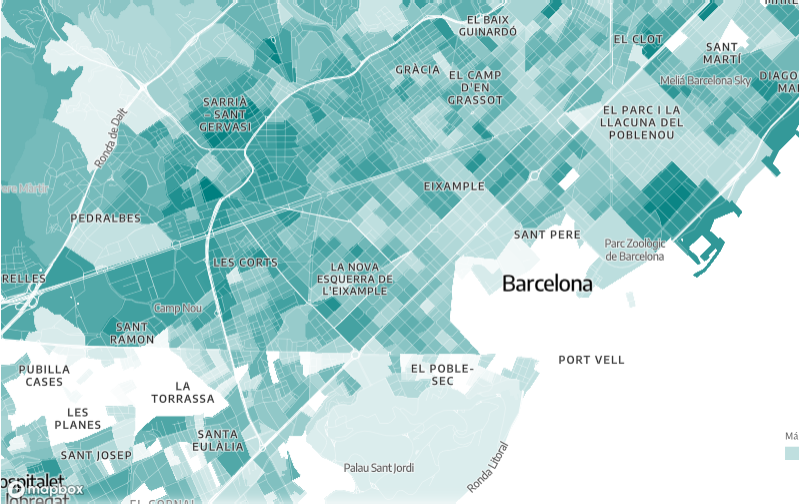
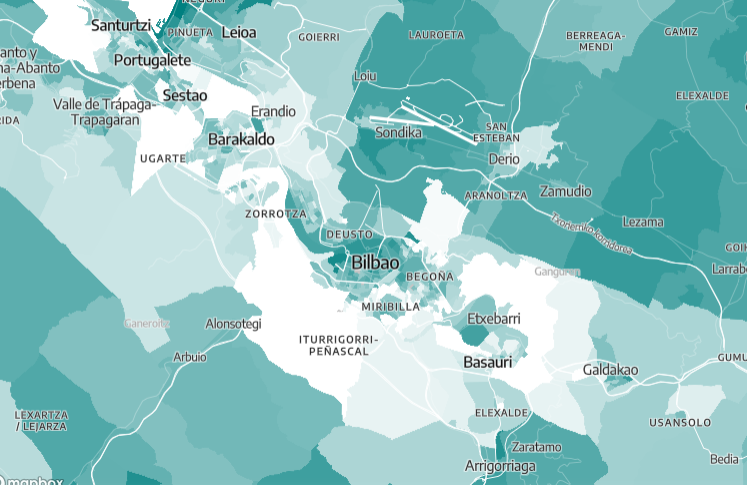
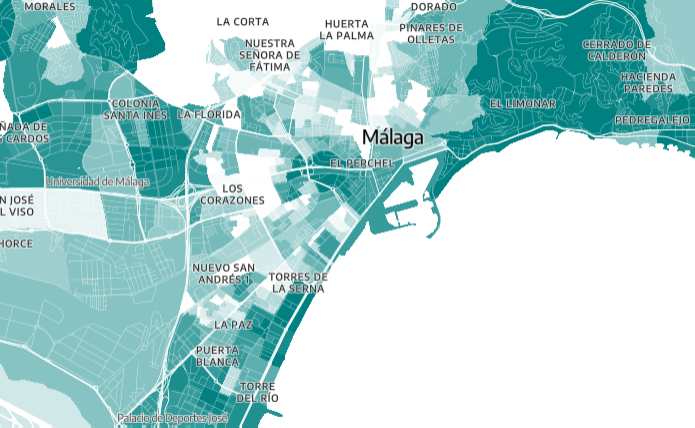
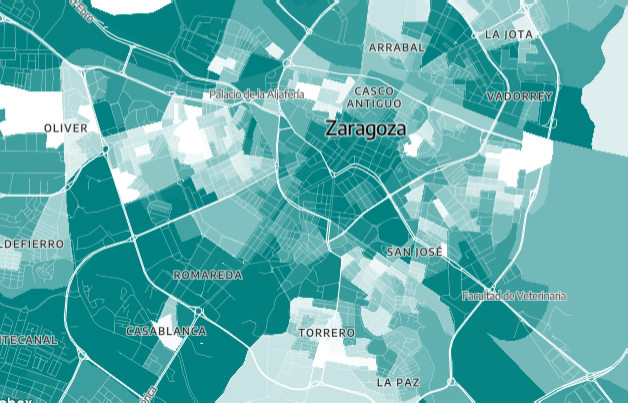
In València we see an increase of the participation in every sense. This is because to the concrete conditions of the class struggle in the city, such as the change of government both in local and autonomic level (PP and Vox in both) and an intense mobilization campaign for social democracy. This means that the city of Valencia as a whole has a lower abstention than the state average, being around 24,1%. However, in different proletarian neighborhoods abstention have risen to 30%, and in some specific districts between to 35% and 40%. The trend, even in a situation of higher participation, is that it is in the proletarian neighborhoods where the electoral farce is more rejected, that’s a fact.
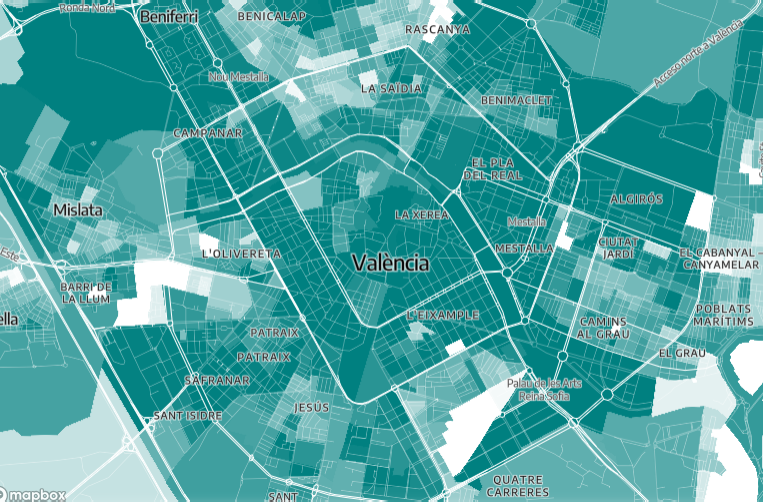
In Burgos we see the same trend, the abstention being higher in the working class neighborhood Gamonal. Let’s remember that Gamonal is a neighborhood with a history of struggle and it rose with strong protest in 2014. About Albacete, the same trend is met, increasing abstention progressively as we move from the urban center and the proletarian presence increases, as well as in particular areas where the State is not interested, for now, in propaganda and vote. This is the case of The 600 (“La Estrella” on the map), an originally working class neighborhood that turned into a ghetto, thanks to the State’s plans, where today workers and a large amount of lumpenproletariat live together.
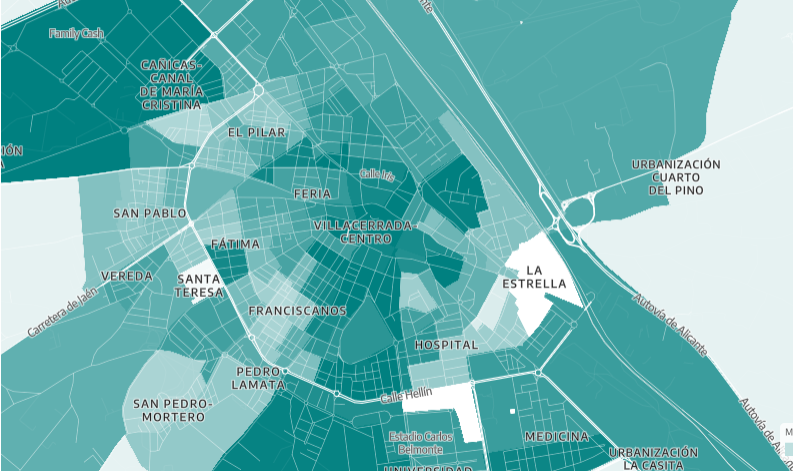
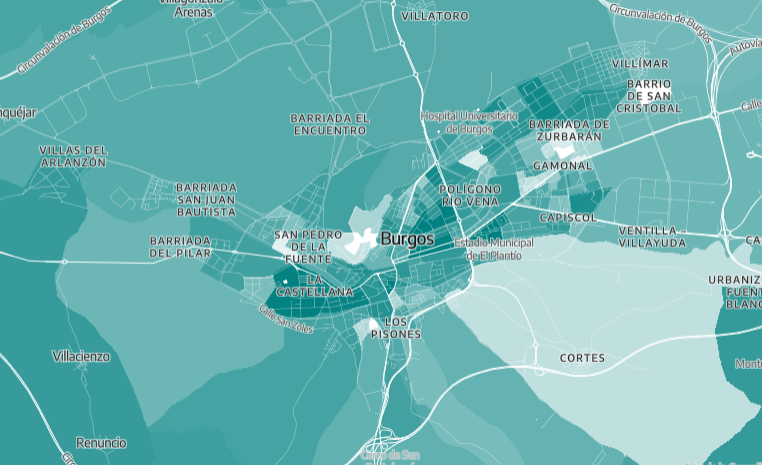
Regarding the data, we see how the development of the national movement in the last decade in Catalonia and the Basque Country reflects greater discontent with the Spanish State. Abstention in Catalonia is 34.57%, and in Euskadi 32.38%, both higher than the average of the Spanish State. (This does not happen in Galiza, which with 26.86% has a greater participation).
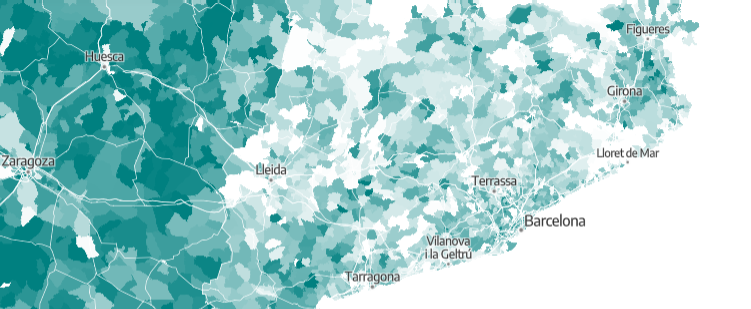
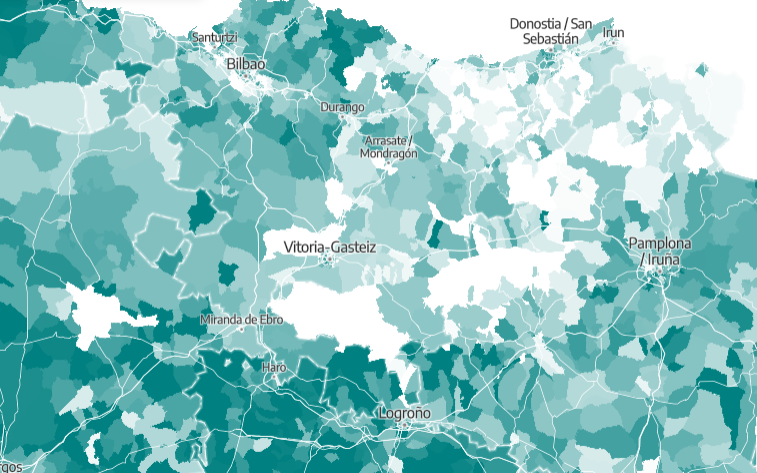
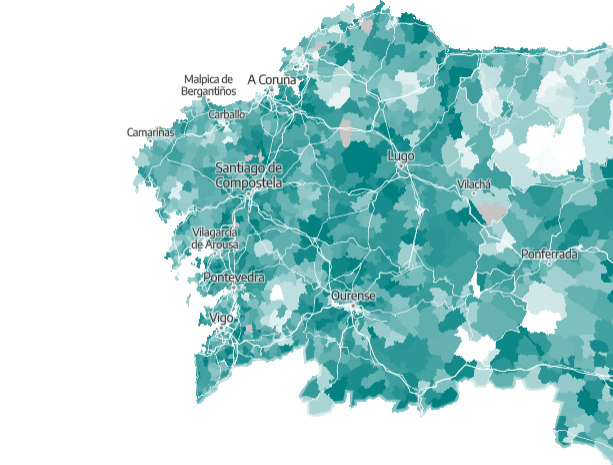
In Canary Islands, which is hard hit by unemployment and the proletariat has little or no future if they stay on the islands, the abstention also increases to 36.41%. In the colonies of Spanish imperialism of Ceuta and Melilla is where the abstentions is more notable. In Ceuta, 44.4% of the voters did not vote, and in Melilla it’s 50,2%. In Melilla more than the half of the ones called to vote did not do it! Such is the mistrust in the bourgeois democracy and the Spanish State.
Active boycott to the electoral farce! Down with the bourgeois elections!
We have already denied that the increase of participation on past Sunday, July 23rd, is because of an increase of the trust of the masses in the bourgeois democracy. The massive campaign for the vote from the left-wing (fear of Vox and ultra-right) and from right-wing (fear of “sanchism”, of Catalonia pro-independency and the “terrorists” of EH Bildu) has fulfilled its function. Hence, it is still not a higher percentage of participation than on many other occasions.
As we have previously said in different articles, before an electoral process, the boycott is the necessary strategy that revolutionaries must use. The deep and broad masses do not believe in the system and they reject to vote. A never-ending source of rebellion and towards them we must focus our attention. In our analysis of the past May 28th we ended as a conclusion:
“This shows a big potential, a perfect place for the developing of the revolutionaries: if we look at the last 20 years, boycott grows in the quantitative level as a slogan among the different forces of the workers movement. As the struggle for the reconstitution of the Communist Party of Spain (PCE) progresses, the campaign for the boycott will take on a larger dimension and more communists, more revolutionaries, more masses, will opt for the boycott.”
Conclusions
We can get several conclusions after this brief analysis:
– The party with the most votes was no party, it was abstention.
– Even if the participation in this General Elections (70,6%) increased incompare to the last ones of November 2019 (66,23%), it is the third lowest in last 20 years.
– All the General Elections where there was an increase in participation is not due to a greater trust in bourgeois democracy, but to a large campaigns for the vote against very wear and teared governments, either by governing for many legislatures, or by carring out anti-popular measures in one single legislature.
– It is in the proletarian neighborhoods where there is a greater abstention. The deep and broad masses reject the electoral farce. More than 10.400.000 people thought that voting would not solve any of their problems, and they decided not to vote. In the areas most hit by Spanish State’s repression on the national movement, such as the Basque Country or Catalonia, abstention is also higher. In places forgotten by the State, such as the Canary Islands or the colonies of Ceuta and Melilla, abstention increases to higher leels, being more people that did not vote than people who voted (Melilla).
– The future government is up in the air. Whether or not the elections are repeated, there will be a crisis in the “governance of Spain”. Parliament is fragmented and no bourgois party has the necessary seats to govern. It is possible that there are unnatural pacts and the clowns take off their masks. There is circus for a while!

